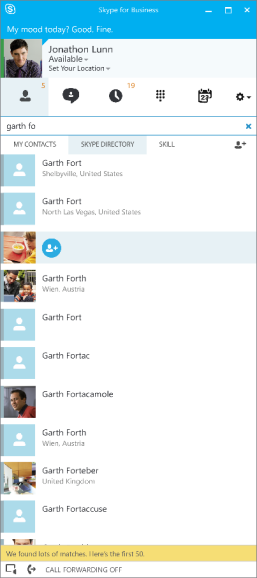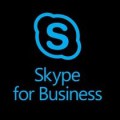What is Skype for Business? A non-technical introduction for the rest of us
Skype for Business was announced on Nov 11th 2014 and has not yet been publicly released. (expected release date: first half 2015) Therefore some of the information in this post might change over time and should be seen as indicative only. Be sure to check back for updates as we get closer to launch time.
What is it?
Maybe you’ve heard the hype about Skype for Business? Perhaps everyone else at your company is talking about it? Or your IT director is all excited about it, but you’ve no idea what she’s talking about? No worries! All will be explained!
 I’m sure you’re familiar with Skype, the popular online messaging and voice/video chat application that lets you call people on the other side of the world for free, and is used by journalists, business-people, gap-year-ing kids and grandmothers worldwide. One third of all international calls are now made with Skype. It’s ubiquitous and everyone loves it (mostly because it’s free).
I’m sure you’re familiar with Skype, the popular online messaging and voice/video chat application that lets you call people on the other side of the world for free, and is used by journalists, business-people, gap-year-ing kids and grandmothers worldwide. One third of all international calls are now made with Skype. It’s ubiquitous and everyone loves it (mostly because it’s free).
Skype for Business doesn’t change any of that, but it brings that Skype power to your business. Rather than your contact list containing your distant relatives and old school friends, your Skype for Business contact list contains your colleagues: the ones in your office, your satellite offices, your overseas offices, even the ones in other companies. Just like Skype you can call them, video chat with them and send them messages. Unlike Skype though, you can also unlock productivity features, such as sharing a virtual whiteboard, and collaborating on a PowerPoint slide deck.
If you also have a personal Skype account, you also have access to those contacts as well, and can contact them using the same application.
Is it secure?
Under the hood, Skype for Business is still a very different beast to Skype. There are two ways to install Skype for Business. The first way is for your business to install the server software on their servers. This is called “on-premises” and means that if two people in your organisation have a Skype for Business conversation with each other, that data never leaves your organisation. The other way is for your organisation to pay for Microsoft (or someone else) to host the server software for you, within your Office365 subscription. “Hosted” Skype for Business is totally separate from the normal Skype network, and is very secure. Office365 also comes with various Service Level Agreements for your comfort and peace of mind.
Who pays for the calls?
A bit like normal Skype, if you’re making a call between two Skype for Business users or to a normal Skype user, there’s nothing to pay. Depending on your setup you may also be able to call PSTN users (people with a regular phone, a regular phone number such as a landline or a mobile phone). Those calls are charged … but they’ll be paid for by your employer. All the calls go through one big box (similar to how a PBX phone system works) so the calls are typically cheaper than you or I might pay.
What can I do with it?
We’ll still finding out what features will become available in the final version of Skype for Business, however these are the expected features:
- Instant Messaging between Skype for Business users, and regular Skype users
- Voice & Video calling between Skype for Business users, and regular Skype users
- Whiteboard and Application sharing between Skype for Business users
- Desktop Sharing between Skype for Business users
- Forwarding, Transferring, Voice mail, Delegation features
- Presence information for Skype for Business users – see at a glance whether your colleagues are on the phone, in a meeting, away or available.
Can I call my Skype contacts?
Yes, you will be able to place calls to your Skype contacts, just the same as your Skype for Business contacts. In addition, you’ll be able to browse the Skype Directory. Details are still coming about this, but here’s a screenshot showing the Skype Directory:
A very brief history of Skype for Business
(or: Why doesn’t it look like Skype?)
Skype for Business isn’t a new product. It’s a re-brand of an existing product called Microsoft Lync. The best way to think about Lync is as a Skype for businesses (it’s not hard to see why they renamed!). Lync offers presence, instant message, voice, video and desktop sharing capabilities, secured for use within and between organisations. You can read more about Lync (in a non-technical way) on my blog post: What is Lync.
Early screenshots of Skype for Business (like the one above) show that even with the re-brand, the layout isn’t changing that much. For comparison, here’s a screenshot from the most recent version of Lync (Lync 2013):
 What other programs can it work with?
What other programs can it work with?
The simple answer: anything you can think of! Skype for Business can be integrated into existing line of business applications to make it easier to connect with people in your organisation. Imagine looking in your internal documentation database program and not just seeing the name of the person responsible for making that big change, but being able to see that they were available, and being able to call them with a single click, from within the application.
There are also applications which can increase collaboration in your organisation by “greasing the wheels” of process. From applications which automatically send out reminders, answer phones and walk customers through various options, to ones which route you through to right person in your company automatically or make booking holiday a pleasure – the list really is endless.
That’s really the essence of this blog you’re on – I specialize in developing applications built on and around Microsoft Lync / Skype for Business which can take your organisation to the next level.
Where can I find out more?
 Hello! I’m Tom Morgan, author of this post, and of all the posts on this blog. I’m passionate about building great applications for Microsoft Lync & Skype for Business, and I’d like to show you how to do it! I work at Modality Systems as a software engineer, developing applications with and for both Microsoft Lync and Skype for Business.
Hello! I’m Tom Morgan, author of this post, and of all the posts on this blog. I’m passionate about building great applications for Microsoft Lync & Skype for Business, and I’d like to show you how to do it! I work at Modality Systems as a software engineer, developing applications with and for both Microsoft Lync and Skype for Business.
If you’re interested in finding out more, why not subscribe to my newsletter about all things Lync / Skype for Business? You’ll receive no spam, just news-worthy announcements and information.
If you’re not convinced, feel free instead to browse around this blog and check out the other content. Or contact me for more information. Are you on Twitter? Excellent – me too!











Ok,thank you very much. It’s very well explained, I understand what Skype for Business is now.
By the way, all your website is like this, good job 🙂